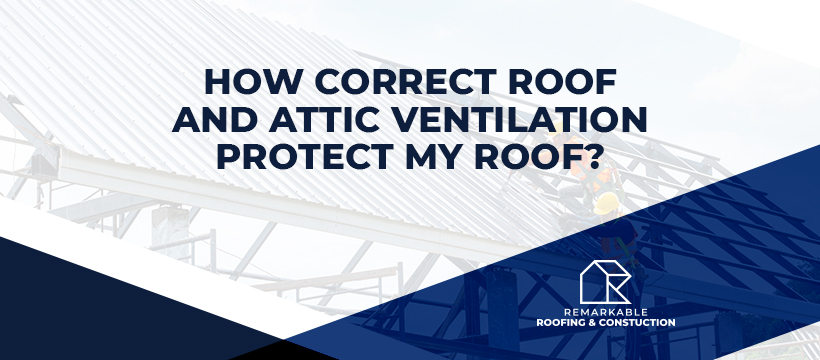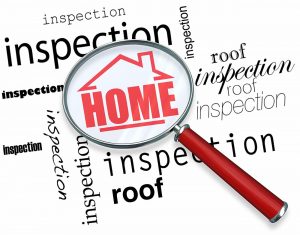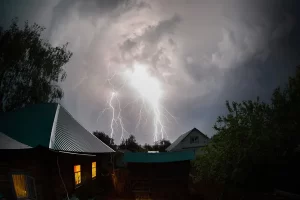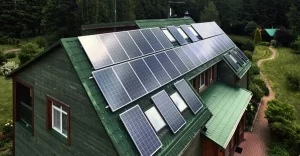Your roof ventilation probably isn’t something you often consider. However, it has a huge role in several areas of everyday life in your house. Possessing the correct amount of ventilation in your attic room may have a beneficial impact on the roof top system’s life expectancy, enhanced comfort and well-being of the family members, your potential costs for residence repairs, and exactly how a lot you have to pay for heating and cooling.
How Attic Venting Functions
Successful ventilation inside an unfinished attic room usually involves intake vents down low in addition to the soffits and exhaust vents up high at the top of roof top ridge. This enables a constant flow of air through space. Colder outdoor air becomes attracted to the soffit vents, and warm, humid air that migrates towards the highest point exits from the vents along the roof top ridge.
Why Enough Roof top Venting is Essential
Correct ventilation in your attic room helps tackle excess heating and moisture that can otherwise ruin your own home. Warmth and moisture buildup inside an attic room cause expected but distinct problems in cold and hot climates areas with scorching summer months and frosty winter seasons can experience the effects of both.
When it’s scorching outside, sunlight beating upon the roofing can increase the attic room’s heat. Contact with this too much warmth can warp the roofing sheathing and distort and prematurely age the shingles. In case the attic room flooring isn’t evenly and adequately insulated, that heat can radiate into the finished living areas making it more difficult and costly to hold the living space comfortable.
In locales in which the temperature falls below freezing in the winter months, warm air escaping into the attic room from the heated living space below rises towards the underside of your roof top deck. While the roof deck warms up, the bottom layer of accumulated snow on the rooftop begins to melt, triggering water to trickle down the roof top. When the runoff reaches the cold outside edge, it refreezes into ice. When this frequently occurs, an ice dam forms along the eaves, blocking the escape of more runoff. When the water has nowhere to go, it could back up within the shingles. A properly installed self-adhered underlayment is a closing safeguard against ice damming. This tear-resistant, waterproofing item seals tight around nails. It may help avoid water overflow from getting into outside surfaces or even the attic room. It could saturate floor insulation, damage the drywall below or enter into the interior surfaces.
Humidness, generated from the living area or outside that gets into a cool attic room, condenses right into a liquid whenever it fulfills colder surfaces. With time, that humidity may cause the roof top system’s degeneration and internal architectural components or damage the attic room insulation. The moisture can allow mildew and mildew to blossom in a warm attic room and set added force on the home’s devices.
Warning Signs Of Completely Wrong Venting
An inferior attic room ventilation system may cause various conditions that show themselves differently. Here are a few understated and several not-so-understated points to watch out for:
- An inexplicable uptick in your home heating and cooling charges, which can happen when your attic room insulating material becomes moist and will lose its effectiveness
- A lot more repeated HVAC repairs as heating and cooling devices that are within a weightier workload can be quite likely going to breakdowns and even early malfunction
- A noticeable buildup of ice along the roof edge in the winter months
- A wavy or rippled appearance for your home’s roofline and shingles that develop from the warping of moisture-damaged decking below.
- Corrosion and corrosion on steel components in the attic room, such as nail heads, electrical boxes, light fixtures, and HVAC system parts
- Dampness, water stains or frost on the attic room part of the roof top sheathing, or any proof of degeneration and decay of the roof’s structural supports
- A rise in discomforting allergies or breathing health problems among your family members might be related to the spread of fungi spores by your interior air supply from mildew and an increase in your attic room.
If you want to check out these signs on your roof top or maybe in your attic room, be sure to maintain safety in mind. Rather than ascending high on the roofing, stroll around the outside of your residence and look up from ground level, making use of some binoculars. Should you go as much as the attic room, ensure that the place is well-lighted, have a challenging walking path, and wear correct protective items.
How To Deal With Completely wrong Attic Venting
Should you identify or have worries about any of these indicators, it’s wise to have your attic room inspected with an accredited roofing contractor who can determine whether there is enough ventilation — building codes typically call for one sq. feet. Net free vent area (NFVA) per 300 sq. feet. Of place inside an unfinished attic room. If far more is essential, they may give you advice on which options can be found to enhance ventilation and make certain it’s efficient. They’ll acquire different variables into consideration to do this, such as:
- The neighborhood climate in the area
- Your roof’s architecture
- The age of your shingles
- The condition of the decking, along with other roof top elements
- Whether your attic room flooring is closed and well-insulated
Should your roof top gets close to the conclusion of their life expectancy, or even the decking or any other parts are damaged or worsened, repairs or a replacement could be encouraged in addition to the following methods to ventilate your attic room properly:
- Putting in constant soffit vents along the outside fringe of the eaves
- Incorporating a ridge vent
- Insulating along the top-rated plates to fulfill or exceed the R-value already in the surfaces
- Closing the attic room flooring to make it airtight and ensuring that there’s the encouraged R-value of properly-installed insulating material in position and it doesn’t obstruct the soffit vents
- Letting one to two inches of air space in between the installed insulating material and roof top sheathing
We can easily give a standard guideline on the quantity of roof top ventilation for your home requirements. For the in-depth examination and expert advice, make contact with our roofing contractors. Need a roof specialist? Contact us for more information and avail our services now!







